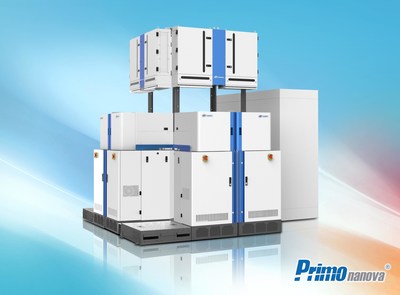ESPOO, Finland, 19th March, 2018 – Picosun Group,
a leading provider of Atomic Layer Deposition (ALD) thin film coating
technology for global industries, reports of significant repeat sales of
PICOSUN™ P-300F production cluster tools to major US industry
customers.
Semiconductor
components manufactured on silicon and compound semiconductor wafers
are crucial in several everyday consumer electronics products as well as
in e.g. transport, aerospace, or industrial automation and power
applications. Even if the majority of the most common IC components is
produced on 300 mm silicon wafers, the sub-300-mm manufacturing is vital
and increasingly important especially for the existing and emerging
non-silicon-based devices. Wafer materials limited to max. 200 mm
diameter such as SiC, GaN, AlN, sapphire, GaAs, LiNbO3, and LiTaO3 offer
various benefits over silicon and enable a generation of completely
new, advanced and innovative end products.
The PICOSUN™ P-300F ALD system is specially designed for production of
IC components such as microprocessors, memories, and hard drives, and
manufacturing of power electronics, mixed signal, and MEMS devices such
as print heads, sensors, and microphones (LINK).
Picosun’s
core competence are cost-efficient, turn-key ALD production solutions
for the fast growing More-than-Moore market. The PICOSUN™ P-300F tool is
the flagship product for these customers. Specially designed to be run
in cluster configuration under constant vacuum to enable fast and
efficient high throughput manufacturing, the P-300F tools are connected
together and operated in fully automatic mode with a central vacuum
robot substrate handling and transfer system. The unique batch flipping
mechanism in the P-300F tool is ideal for manufacturing lines where the
most of the process steps take place in horizontal geometry.
Cassette-to-cassette loading for up to 50 pcs batches of 200/150/100 mm
wafers, SEMI S2/S8 certification, and SECS/GEM option for factory host
integration make the P-300F the optimal choice for demanding
manufacturing needs for e.g. moisture barriers, capacitors, and SAW/BAW
filters.
“We
at Picosun are very happy of the success of our P-300F cluster tools.
Our customers have obtained unparalleled process results in them, and
this excellent performance has now resulted in repeat sales of these
tools to our key industrial customers. The purity, uniformity, and
barrier properties of the ALD films deposited in these systems fulfil
the strictest requirements of today’s semiconductor industries, making
the PICOSUN™ P-300F the tool of choice for the forerunners of
semiconductor manufacturing,” states Juhana Kostamo, Managing Director
of Picosun.














